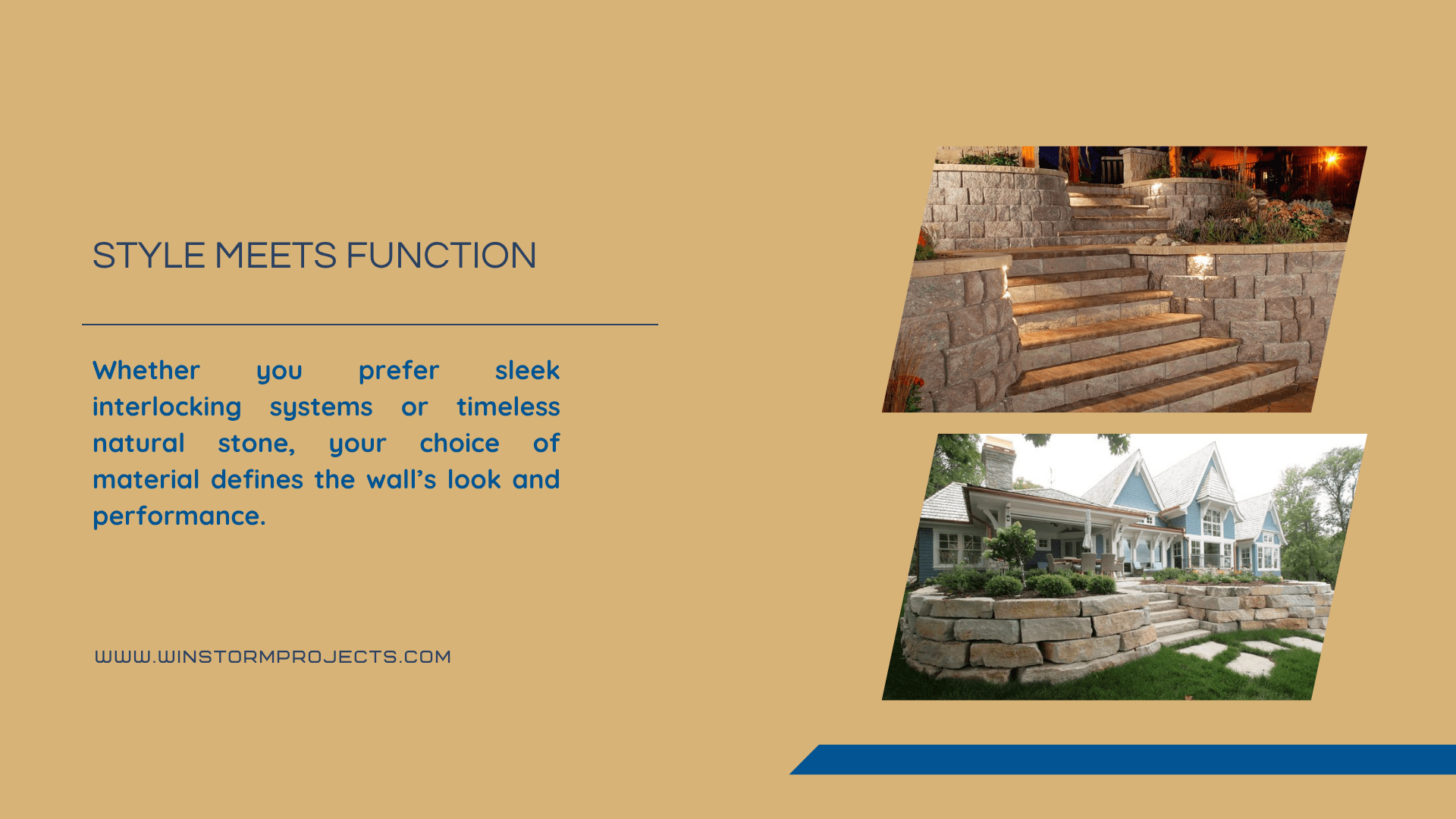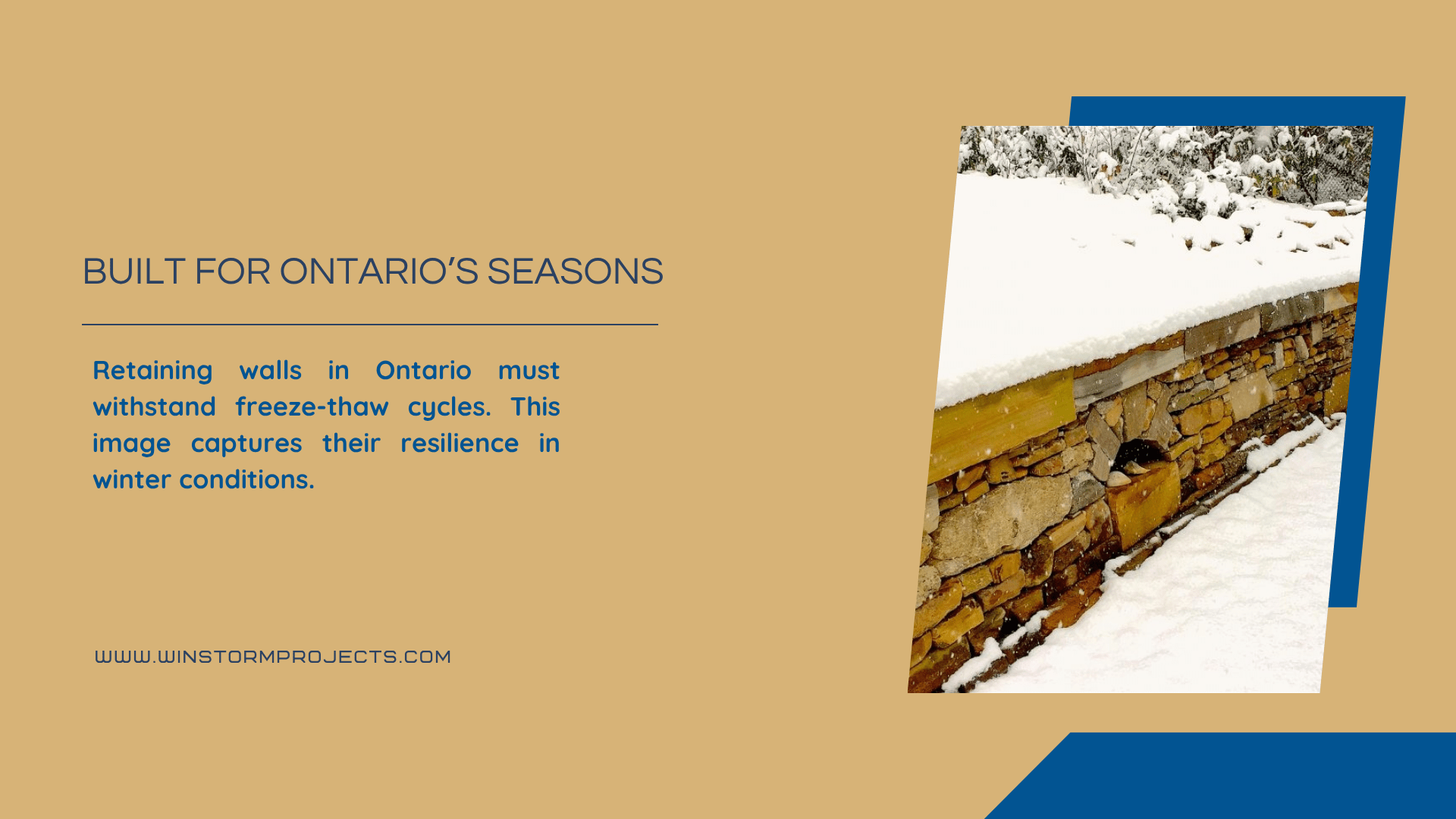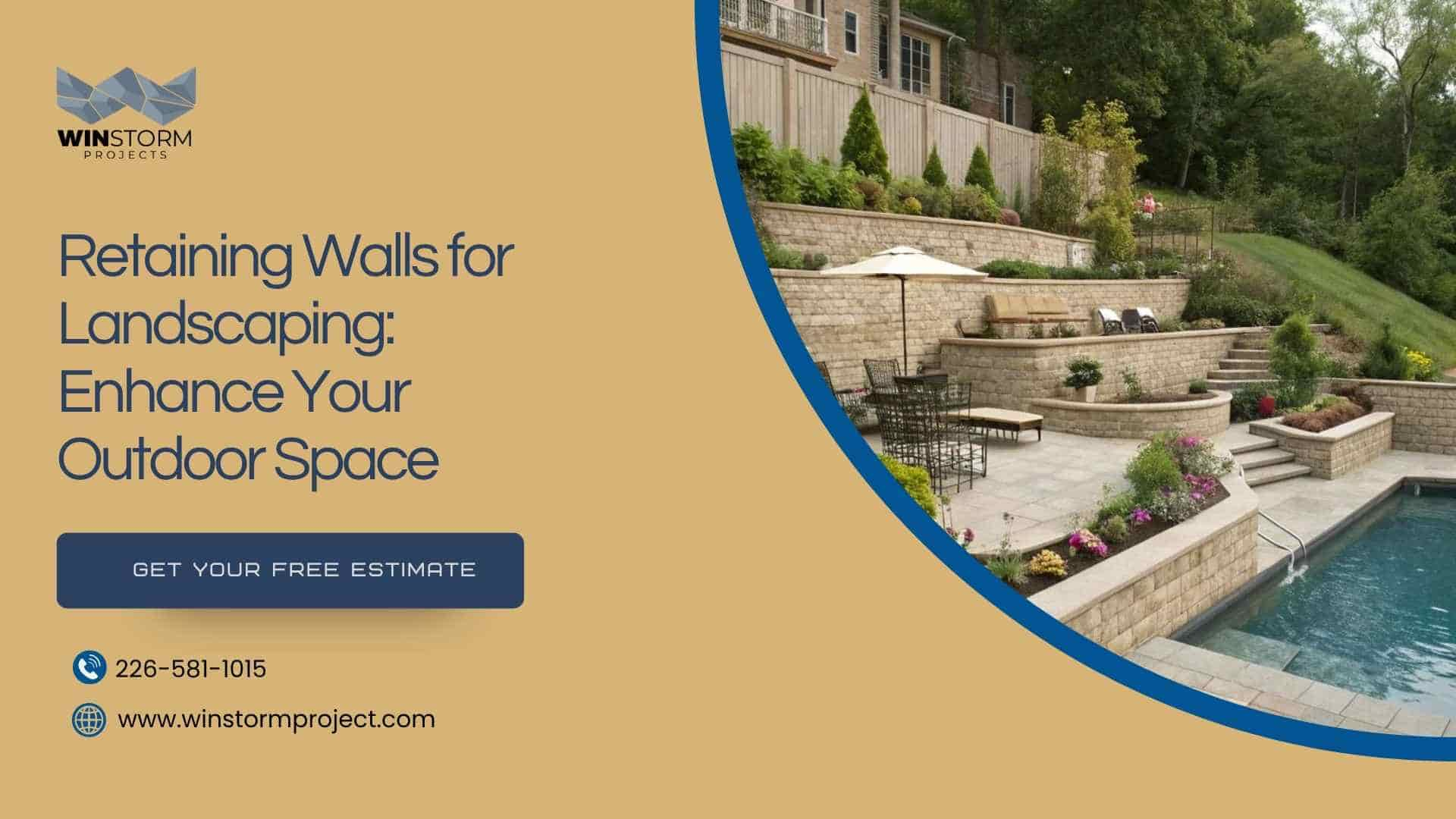Retaining walls play a vital role in landscape design, especially here in Ontario, where sloped terrain and clay-heavy soil are common. These walls are not only functional—they prevent soil erosion, manage water runoff, and create level surfaces—but they also bring structure and style to your outdoor space.
Whether you’re dealing with uneven ground, planning a garden renovation, or adding dimension to a patio, a retaining wall can help transform your outdoor space into something both beautiful and usable. In this guide, we’ll cover the benefits of retaining wall construction, types of materials, expert tips, and creative design ideas that elevate your landscape and increase property value.
What Are Retaining Walls Used For in Landscape Design?
A retaining wall is more than just a barrier—it’s a smart solution for controlling water, supporting slopes, and reshaping your yard to maximize usable space. In landscape design, these walls serve both functionality and form.
Key Uses of Retaining Walls in Landscaping:
- Prevent Soil Erosion: Holding back soil on a slope prevents washout during Ontario’s heavy rains.
- Level Sloped Areas: Create flat, functional spaces for patios, gardens, or walkways.
- Aesthetic Appeal: Define garden zones, introduce tiered planting beds, and enhance the visual layout of your yard.
- Direct Drainage: Properly constructed walls improve water flow, helping prevent pooling and soggy spots.
Materials and Construction in Ontario

Choosing the right material is crucial for building retaining walls that stand the test of time, especially given Ontario’s freeze-thaw climate. Here are the most popular options:
Concrete Retaining Wall Blocks
These are durable, low-maintenance, and widely used in residential and commercial retaining wall construction. Interlocking concrete blocks are especially popular due to their strength and ease of installation.
Natural Stone Walls
Ideal for a premium look, natural stone blends beautifully with anylandscape. Though more expensive, it adds timeless charm and high-end curb appeal.
Timber Walls
While timber is budget-friendly and can create a rustic look, it’s less durable in Ontario’s climate and better suited for short-term or decorative use.
Drainage Is Essential
Every professional retaining wall installation in Ontario should include drainage solutions. Gravel backfill and drainage pipes reduce pressure buildup and prevent frost damage in colder months. Without proper drainage, even the strongest wall can fail over time.
Popular Retaining Wall Block Types and Their Benefits
Concrete Block Systems
Pre-cast and interlocking block systems are efficient, customizable, and built to last. They’re ideal for curved or straight layouts in both small gardens and larger landscape projects.
Interlocking vs. Stacked
- Interlocking Blocks: Snap into place for added stability and faster installation.
- Stacked Blocks: Dry-stacked walls rely on gravity and require precise alignment, often preferred for natural aesthetics.
Manufactured vs. Natural Materials
- Manufactured Wall Blocks: Consistent in shape, affordable, and available in various styles and finishes.
- Natural Stone: Offers organic charm but requires skilled installation and a higher budget.
Weighing Cost and Performance
Consider both budget and project scope. For large-scale or long-term use, concrete or interlocking blocks offer excellent value and longevity. If style is your top priority, natural stone is worth the investment.
Choosing the Right Retaining Wall for Your Landscape
To enhance your outdoor space with a functional, attractive retaining wall, assess your goals and site conditions.
- For high-traffic areas or sloped yards, go with interlocking concrete blocks for safety and structure.
- For decorative gardens, natural stone provides a warm, rustic appearance.
- For tighter budgets, timber can work in less demanding spaces.
Ontario’s clay soil, seasonal temperature swings, and drainage issues mean that choosing durable materials and integrating proper water management are essential steps in the retaining wall installation process.
Benefits of Retaining Walls in Landscape Design

Incorporating retaining walls into your landscape offers a variety of benefits—both practical and visual.
Soil Erosion Prevention
One of the main reasons to build a retaining wall is to prevent soil erosion. By stabilizing slopes and improving runoff flow, you protect your property from water damage and foundation issues.
Enhanced Aesthetics
Walls can add structure and symmetry to your outdoor living space. From curved stone walls to multi-tiered block designs, there are endless ways to make your landscape pop.
Creative Ideas to Transform Your Landscape with Retaining Walls

Explore these design concepts to elevate your outdoor space and express your personal style:
- Tiered Walls: Ideal for steep yards—each level becomes a planting opportunity.
- Mixed Materials: Blend stone, wood, or metal for a modern or rustic vibe.
- Integrated Lighting: Low-voltage lighting adds ambiance and improves safety.
- Living Walls: Built-in planters or vertical gardens soften the hardscape.
- Water Features: Combine walls with waterfalls or fountains to add movement and sound.
By working with a professional retaining wall contractor, you can bring these ideas to life with expert craftsmanship.
Design Considerations for Retaining Wall Installation in Ontario
Wall Height and Support
Walls over 1 meter (3.3 feet) may require a structural engineer and local permits. Always use appropriately rated blocks and follow professional retaining wall construction guidelines.
Drainage Design
Good drainage is the backbone of any reliable wall. Ensure there’s a slope behind the wall and gravel with drainage pipe to handle overflow, especially during Ontario’s spring thaw.
Maintenance Tips for Long-Lasting Retaining Walls
Routine care keeps your walls strong and attractive:
- Inspect Regularly for cracks, bulges, or shifting blocks.
- Clear Debris from wall surfaces and drainage outlets.
- Check Drainage Pipes during rainy seasons to avoid water buildup.
- Reinforce Base Areas with gravel to support heavy rainfall.
- Manage Vegetation to prevent root pressure from damaging the wall structure.
With consistent maintenance, your retaining wall will continue to support your landscape for years.
Conclusion: Retaining Walls That Stand the Test of Time
Whether you’re reimagining a sloped backyard or designing a modern garden, retaining walls bring strength, structure, and style to your outdoor living space. Their benefits go far beyond erosion control—they add definition, depth, and aesthetic appeal to any landscape design.
By choosing the right materials, working with experienced pros, and planning for long-term durability, your wall can transform your outdoor space into something beautiful and practical. For professional retaining wall construction in Ontario, we’re here to help every step of the way.
Frequently Asked Questions
What is the primary purpose of a retaining wall in landscaping?
To manage soil erosion, stabilize slopes, and create usable, level surfaces in sloped or uneven yards.
What are the most durable materials for a retaining wall?
Concrete and interlocking block systems offer excellent durability, while natural stone provides premium aesthetics.
Why is drainage important for retaining wall construction in Ontario?
Ontario’s freeze-thaw cycles demand proper drainage to prevent water buildup, which can cause wall failure.
Are retaining walls expensive to install?
Costs vary depending on materials, size, and complexity. Concrete blocks are often the most cost-effective, while natural stone is on the higher end.
Can I build a retaining wall myself?
For smaller projects, DIY may be possible. For walls over 1 metre or those requiring structural support, always consult a professional.
What’s a creative way to make retaining walls more attractive?
Incorporate lighting, use mixed materials, or design tiered walls with garden beds to enhance both look and function.

